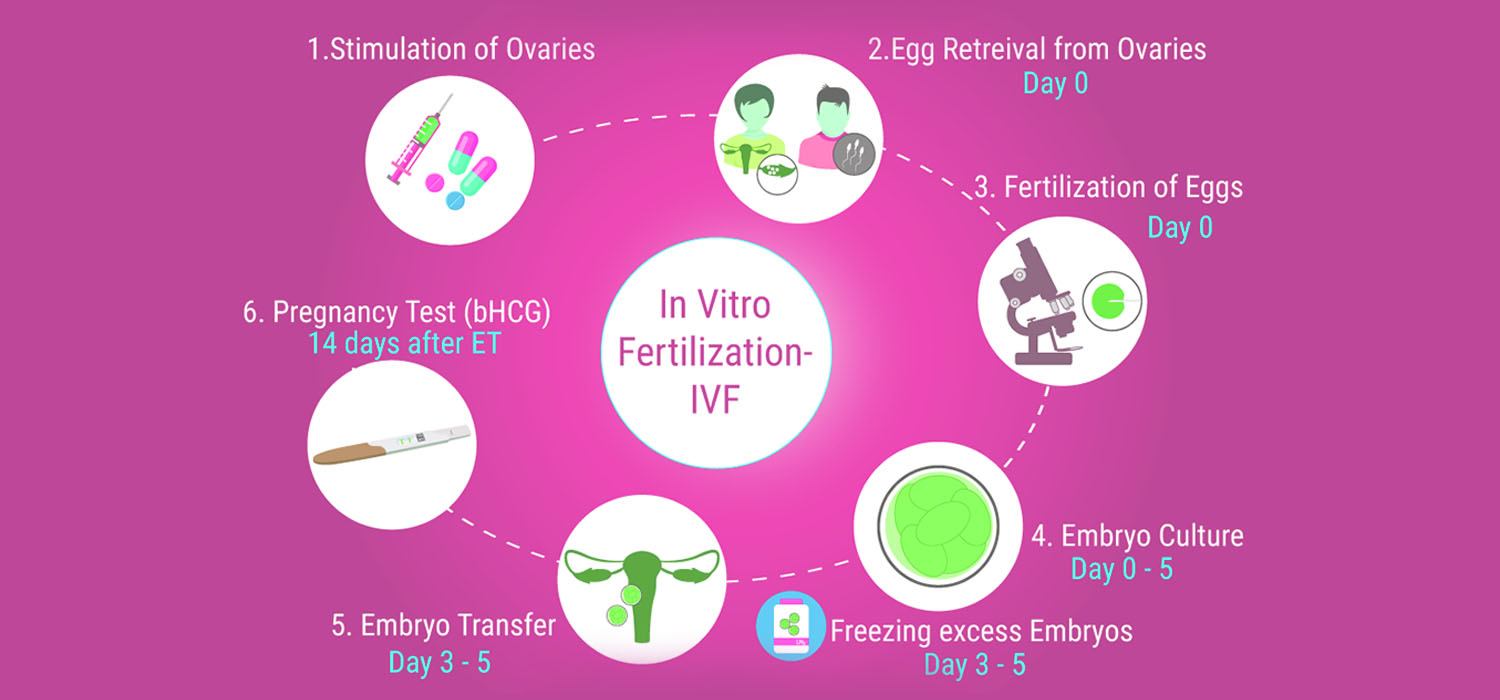Our Services:
Approximately 15% of couples world wide are affected by various infertility conditions. At the janeen Fertility and genetic center , our doctors have been using Assisted Reproductive Technology (ART) since 2000 to help couples achieve their dream of having a biological child.
ART includes all fertility treatments in which both eggs and sperm are manipulated outside the human body by medical staff prior to fertilization and implantation in the woman’s uterus. In general, ART procedures involve surgically removing eggs from a woman’s ovaries, combining them with sperm in the laboratory, and returning them to the woman’s body or donating them to another woman.
Our team at At the janeen Fertility and genetic center works diligently to provide a full spectrum of Assisted Reproductive Technologies (ART).
ART Procedures:
- In Vitro Fertilization (IVF)
- Intracytoplasmic Sperm Injection (ICSI)
- Intrauterine Insemination (IUI)
- Fertilty Evaluation for Men and Women
- Freezing Embryo and Sperm
- Pregnancy Problem: Early/ Late Pregnancy with Complication
- Habitual Muscarriage
- Gynecology Problems
- Uterus and Vaginal Endoscopy
- Prenatal Diagnosis
- Prenatal Consulting
- Genetic Diseases
- Chromosomal Diseases
- Congenital Malformation
- Paternity Testing
- Hereditary Blood Disease-Sickle Cell&Thalaseemia
- Pre Implantation Genetic Diagnosis
- Whole Genome Study
- Exome Study
The Initial Consultation:
On the first visit the doctors interview the couple and discuss previous treatment and results of any tests which might have been done in the past. The further options for the treatment are explained thoroughly. Complete physical examination will be done.
Counselling:
Counselling is done by the doctor himself/ herself who is experienced in different aspects of infertility and reproductive biology. A detailed explanation of the queries of the couple is provided.
Review Consultation:
Couple is seen again to discuss the results of all the investigations before starting the treatment cycle.
Management of Subfertility:
1- Intra Uterine Insemination (IUI):
This is a simple technique for those women whose fallopian tubes are open. Semen analysis may be normal or slightly subnormal. This can be done on natural cycle or with ovulation induction. The couple is explained fully about the treatment. The drugs are started as per assessment by the doctor with individualization of dose with the cycle..
The appointment is given for follicular tracking by transvaginal ultrasound and once follicle maturation occurs with or without HCG IUI is performed around mid cycle. When they come for IUI, the semen is washed and prepared to achieve best, healthy and active sperms. Those sperms are introduced into the uterine cavity through a fine atraumatic catheter. It is a simple painless procedure. IUI can be repeated many times for better results.
2- Ovulation Induction And Monitoring:
If semen analysis is normal and fallopian tubes are open, the wife will be given drugs to make more eggs, which will improve the chances of conceiving.
When using these fertility drugs the women need to have few ultrasound scans to see effects of drugs. The dosage of drug can be altered according to the response.
3- In Vitro Fertilization (IVF):
This is commonly known as “test tube baby”. It literally means the fertilization of eggs by sperms outside the body in a specially designed incubator. It is used as a treatment of infertility in patients, who have blocked, or badly damaged fallopian tubes, endometriosis, mild to moderate sperm defects, male and female antibodies problem or even when the cause is unexplained and few years have passed.
Following are basic step of IVF:
Treatment of Cause And Normalization and optimization of Abnormalities.
A- Stimulation of Ovaries:
A number of different drug regimes depending on the specific requirement of the individual. In one protocol the patient is given nasal spray 4-5 times a day which has the effect of switching “off” the pituitary( part of brain ). Natural production of FSH and LH is stopped, so that the stimulation of ovaries is completely controlled. After 10 -14 days an ultrasound scan is performed to see the effect and then daily injections of gonadotrophins (FSH and LH) are given to stimulate the ovaries. Certain drugs are used until the eggs are sufficiently mature for collection.
Each patient is individualized and appropriate protocol selected for stimulation.
B- Monitoring of Growth of Follicles:
This is essentially performed by ultrasound scan. These scans are performed transvaginaly This is a painless procedure and do not require full bladder. Vaginal scan is quick and prefered by most women. At each ultrasound scan endometrial thickness , number and size of follicles are measured. Once the follicles are ready, HCG (Human Chorionic Ganadotrophin) is given for final maturation of the eggs. After 34-36 hours egg collection is performed.
C- Egg Collection:
Eggs are collected by using trans vaginal ultrasound probe in an operation theatre. It could be done under short general anesthesia or using sedation or using sedation and analgesia.
It takes 20-30 minutes. The patient can go home after 3-4 hrs if done under G/A and 1-2 hrs if done under analgesia.
4- Surgical Sperm Collection (SSC):
Those males having no sperms in their ejaculate (AZOOSPERMIA) but have normal hormone levels most probably will have normal sperm productions which are not coming in semen due to some obstruction.
These sperms can be collected surgically from testis, epididymis or vas deferens by putting a needle and aspirating the fluid.
The process is called per-cutaneous epididymal sperm aspiration (PESA).
MESA: Micro epidermal sperm aspiration is another procedure for collecting sperms.
TESE: Testicular excision and sperm extraction is the method in which testicular biopsy is taken and sperms are retrieved.
Even if few sperms are found they can be used for ICSI. The procedure is done under local or general anesthesia and has no significant complication.
5- Sperm Preparation:
The husband is asked to produce a semen sample on the morning of egg collection.
He should abstain from inter course two to three days prior to collection. The semen sample is prepared by special washing techniques to separate out the most healthy sperms.
6- Assisted Hatching:
Those women whose eggs or embryos are covered in thick shell (zona) usually fail to implant due to failed hatching. There are different methods for assisted hatching. Either by drilling a hole in the zona or by removing the zona completely by the help of an enzyme (pronase).
LASER ASSISTED HATCHING is the preferred mode of assisted hatching being used in our centre.
7- Embryo Transfer (E.T):
Embryos are usually transferred 3-5 days after collection 2-3 very best embryos are chosen for transfer. It is a simple procedure and takes few minutes only ,and is not painful .
8- Blastocyst Transfer.
In this technique embryos are grown in incubator till 5 days to get Blastocyst which give better success rate, the main failure of ART being a failure of implantation as most ova will fertilize .
In order to increase the chances of pregnancy progesterone tablets or pessaries/ gel are given from the night of collection till, pregnancy test is performed.
9- Intra cytoplasmic Sperm Injection (ICSI):
This is an advanced technology for those males who have few normal sperms . In this techniques a single sperm is injected in an egg under the microscope by a highly skilled scientist. This technology is utilized after investigating the husband, treating any causes and normalizing any abnormalities to ensure the highest quality sperm possible.
10. Cryopreservation of semen and embryos.
This technique is used to preserve the good quality remaining embryos ,semen and testicular biopsies for the future use.
_page-0001.jpg)







